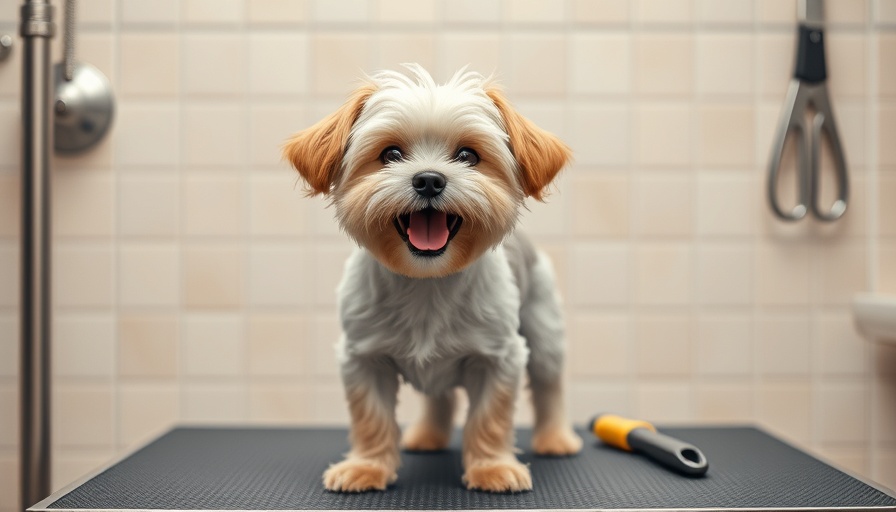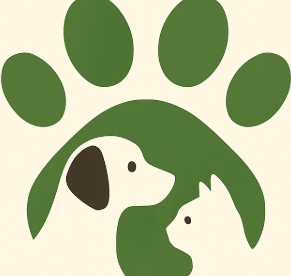
The Importance of Grooming Senior Dogs
Grooming is essential for all dogs, but it takes on a new level of significance as dogs enter their senior years. Older pets, like Pandy the 14-year-old Shih Tzu showcased in the video, often face various health challenges that can make maintaining a hygienic coat that much more critical. Senior dogs may experience thicker fur, sensitive skin, or even growths that need to be monitored closely—just as Lisa from K9 Clips did during her grooming session.
In the video 'Senior Shih-Tzu full groom, well behaved, dog grooming without restraints,' Lisa shares her insights on grooming senior dogs, which inspired us to explore key grooming techniques and tips for older pets.
Regular grooming not only keeps your dog looking good but also aids in identifying potential health issues. By grooming your senior dog frequently, you can catch problems related to their skin or other underlying issues early on, which can mean the difference between treatment and a long-term issue.
Building Trust: Grooming Without Restraints
One of the notable approaches taken by Lisa was grooming Pandy without using restraints. This method promotes a less stressful experience for the dog and fosters trust between the groomer and pet. For senior dogs, who may already be apprehensive due to age-related changes, using gentle handling can help create a comfortable grooming environment.
As Lisa mentioned, older pets can exhibit more nervous behavior, so it's important for pet owners to recognize when their senior dogs are feeling anxious. Positive reinforcement, like soothing words and gentle strokes, can ease the grooming process significantly.
Common Grooming Challenges for Senior Shih Tzus
A Shih Tzu’s coat can become matted more easily as they age, making grooming a challenge. Lisa dealt with Pandy's thick fur and took the time to establish stable grooming practices. Owners should be prepared to address specific issues like:
- Matted Fur: Regular brushing can prevent matting, which can be painful for older dogs.
- Sensitive Skin: Older dogs may have more sensitized skin, requiring careful product selection.
- Reduced Mobility: Senior pets might not be able to stay in certain positions for long periods, necessitating breaks during the grooming process.
Benefits of Regular Grooming
Establishing a routine for grooming can lead to numerous benefits:
- Enhanced Hygiene: Regular bathing and brushing keep the dog's coat clean and reduce the risk of skin infections.
- Improved Mental Health: The one-on-one time spent during grooming can strengthen the emotional bond between the pet and owner.
- Physical Health Monitoring: Grooming offers an opportunity to check for unusual lumps, bumps, or changes in skin condition.
Mindful Grooming: Techniques to Try at Home
Pet owners looking to maintain their senior dog's grooming routine can incorporate a few simple techniques:
- Use the Right Tools: Opt for grooming tools designed for seniors, including gentle brushes and clippers to avoid discomfort.
- Create a Calm Environment: Set up an inviting space for grooming sessions, minimizing noise and distractions.
- Listen to Your Dog: Pay attention to your dog's cues. If they seem distressed, take breaks or use treats to foster a positive experience.
Wrapping Up: The Value of a Good Grooming Routine
In conclusion, grooming a senior dog like Pandy requires patience, care, and a gentle touch but is a fulfilling way to enhance your pet's quality of life. From identifying health issues to fostering trust between you and your dog, the benefits far exceed the effort. The video, "Senior Shih-Tzu full groom, well behaved, dog grooming without restraints," showcases valuable practices that can help you navigate your own senior dog grooming adventures.
If you are a pet lover looking to deepen your connection with your furry friend, consider regular grooming as an essential part of their health care. Your senior dog deserves all the comfort and care you can provide, bolstered by informed grooming techniques.
 Add Row
Add Row  Add
Add 




 Add Row
Add Row  Add
Add 

Write A Comment